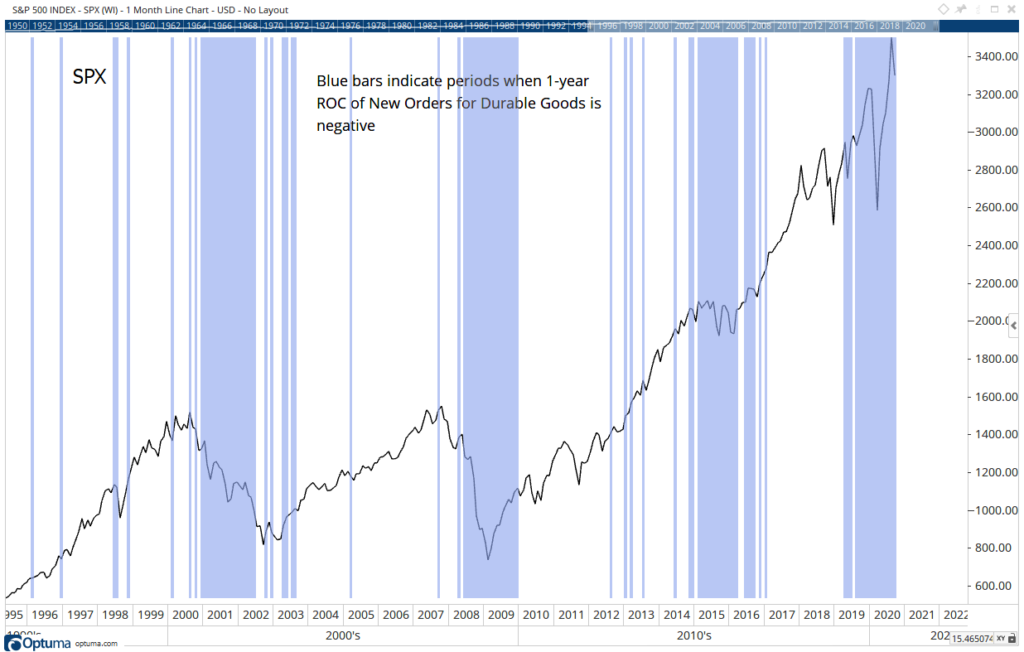Last week, the Census Bureau reported new orders for durable goods. CNBC noted that orders increased more than expected in August, and demand beat estimates.
The business news network called this an “upbeat report, suggesting a rebound in business spending on equipment was underway after a prolonged slump.”
But that might be bearish for the stock market.
Durable goods are items we expect to last at least three years. They include kitchen appliances, cars and factory machinery.
Durable goods trends reflect consumer and business confidence.
Consumers make big purchases when they’re optimistic about the future. That’s especially true for financed purchases. Financing means consumers are confident they can make future payments.
Pessimistic consumers delay purchases. Think of your own household. If you’re worried about losing your job, you avoid new debt.
This idea scales to the larger economy. Millions of households behave the same way.
And these same factors affect business decisions. Businesses make big purchases when managers are optimistic. They defer decisions when they are pessimistic.
Durable goods orders are one of the few indicators that combine consumer and business confidence. It’s an important leading economic indicator.
And it forecasts trends in the stock market. Avoiding the stock market when new orders are lower than they were a year ago beats a buy-and-hold strategy.
Durable Goods Were a Reliable Stock Market Indicator
The chart below shows the S&P 500 Index, the black line, with blue bars indicating times when new orders were down compared to a year prior. The Commerce Department started publishing durable goods data in 1992.
Low Durable Goods Orders Signal S&P 500 Declines

Source: Optuma
The S&P 500 generally declined when orders declined. This used to be a reliable signal. That changed when the Federal Reserve started increasing the money supply at an unprecedented rate late last year.
For now, the Fed is winning its fight against basic economic laws. But stock prices are completely dependent on Fed policy. See how the S&P 500 soared despite durable goods orders declining throughout 2020.
New orders for durable goods tell us that the stock market is in trouble. Think about how stocks would decline without the Fed’s support.
Michael Carr is a Chartered Market Technician for Banyan Hill Publishing and the Editor of One Trade, Peak Velocity Trader and Precision Profits. He teaches technical analysis and quantitative technical analysis at New York Institute of Finance. Mr. Carr is also the former editor of the CMT Association newsletter, Technically Speaking.
Follow him on Twitter @MichaelCarrGuru.




